White Gums Can Point to a Serious Health Issue — Dentists on When You Should Be Concerned
Most causes of white gums are easily treatable, but the symptom can sometimes be an early warning sign of oral cancer

Ever been brushing your teeth or flash a smile while looking in the mirror and noticed something seemed… off? While the shade of everyones’ gums varies, pale or white-spotted gums may signal a serious underlying health issue. Here, experts weigh in on what causes white gums, when they’re something to worry about and what you can do to restore their healthy hue.
What are white gums?
The term “white gums” refers to several types of gum discoloration. “For some, it means a white spot or a series of spots on the gums,” says Kenny Brown, DDS, a Stanford-trained oral and maxillofacial surgeon and the founder of Feno. “For others, it means the gums are paler than they normally are.”
Dr. Brown says gum tissue can be a variety of colors. People with more melanin (the substance responsible for skin pigmentation) tend to have darker gums. Similarly, people with less melanin have lighter gums. Even so, white gums that occur alongside other worrying symptoms warrant a visit to your dentist.
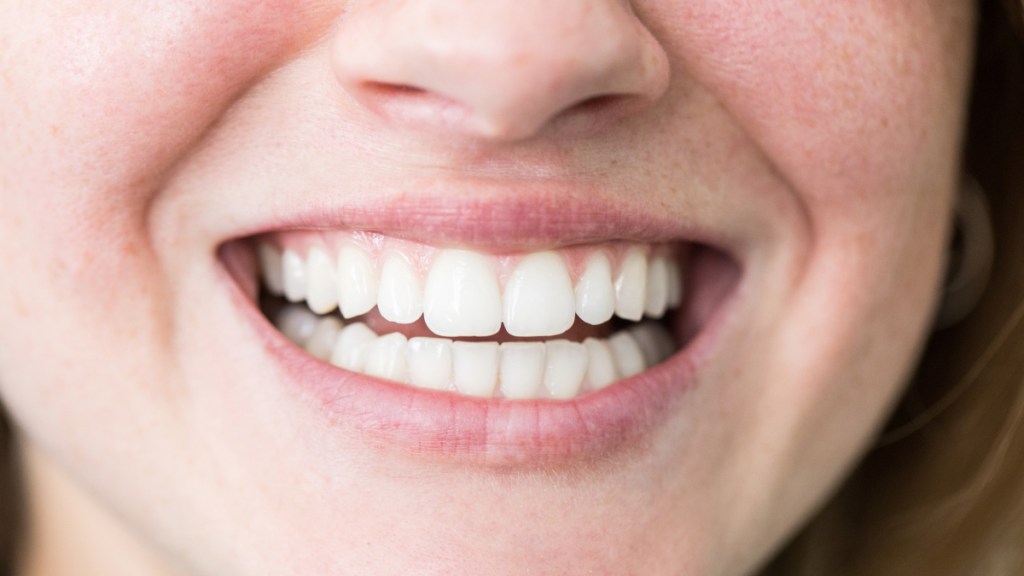
Symptoms of white gums
The most obvious sign of white gums is visible gum discoloration. Healthy gum tissue is normally pink in color, says Ronald Santana, DMD, Chair of the Department of Periodontology and Oral Implantology at Temple University’s Maurice H. Kornberg School of Dentistry and the head of science and development at Oral Bio Life. “However, there are some conditions and diseases that manifest as white patches, ulcers, sores and paler discolorations of the gingiva,” or gum tissue.
While some people only notice visual discoloration, white gums can also occur alongside other symptoms. They include:
- Pain
- Swelling
- Bleeding gums (Click through to learn how to stop bleeding gums)
- Loose teeth
- Sores and/or lesions (Click through to see how to get rid of canker sores)
If you develop any of these issues, “It’s recommended you see a dentist as soon as possible to determine the cause,” Dr. Santana says.
White gums: causes + cures
Now that you know what to watch out for, let’s take a closer look at the most common causes of white gums. Plus, we’ll break down the remedies that treat the underlying condition (and as a result, restore color to your gums).
1. Anemia
Anemia occurs “when there is a decrease in red blood cells, which are needed to carry oxygen throughout the bloodstream and around the body,” Dr. Santana explains. “Due to the low blood oxygen, the color of the skin, oral mucosa and gingiva turn pale.”
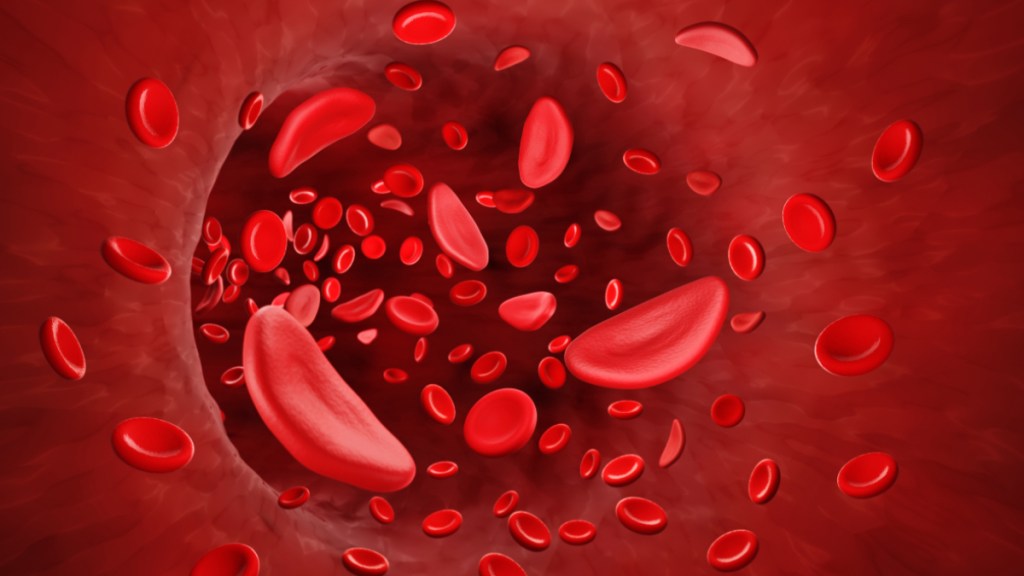
Anemia happens for various reasons, including iron deficiency, vitamin B12 deficiency and heavy menstrual periods. It can also be caused by more serious medical issues, like chronic kidney disease (CKD) and ulcerative colitis.
Ask your doctor about anemia testing if you have white gums that occur alongside fatigue, headaches and shortness of breath. A simple blood test can assess your blood oxygen levels. (Low on iron, but not yet anemic? Click through to learn how to treat iron deficiency without anemia.)
How to treat white gums caused by anemia
Anemia treatment depends on the severity of your iron deficiency. Often, it involves iron supplementation and eating an iron-rich diet that includes dark leafy greens, legumes and red meat. If your anemia is caused by an underlying health problem, like heavy menstrual periods, you might also benefit from intravenous (IV) iron supplementation or a procedure like endometrial ablation. Once the source of anemia is addressed, your gums should return to a healthy pink color.
2. Oral thrush
You might have oral thrush if your gums have white or yellow spots or patches. “Candidiasis, or oral thrush, is a fungal infection that causes creamy white spots [plaques] on the tongue, cheeks and gingiva,” Dr. Santana says. “These plaques can cause some pain or discomfort and can be scraped off, causing bleeding in the affected area.”
Everyone has a small amount of candida fungus in their mouth, and it’s typically nothing to worry about. However, certain medical conditions, like diabetes, can cause the fungus to grow out of control. This increases the risk of white gums, bleeding and pain.
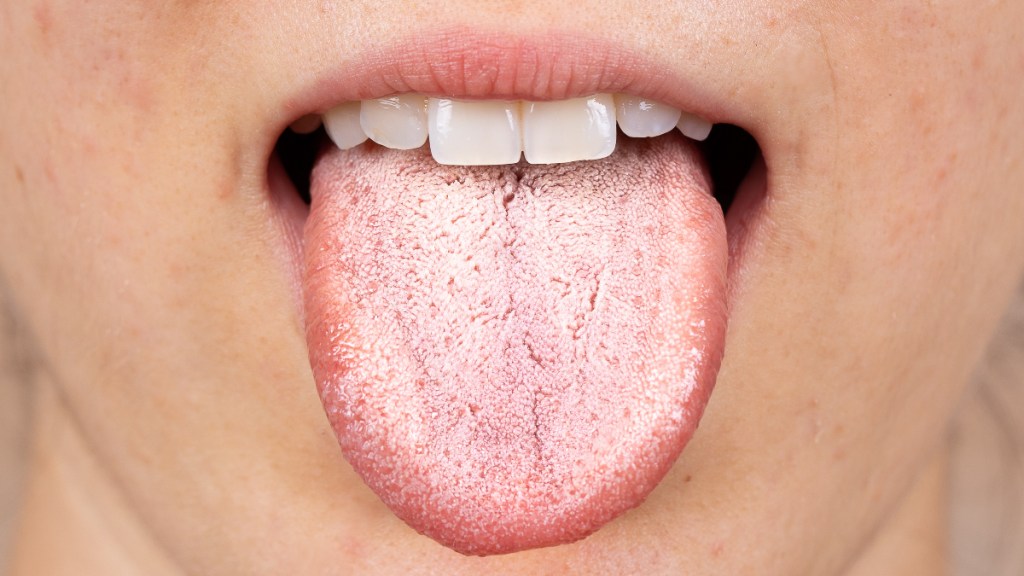
How to treat white gums caused by oral thrush
Mild thrush typically improves with better oral healthcare. Regularly brushing and flossing your teeth and eating a balanced diet support your oral microbiome. More severe infections may require treatment with antifungal medication, which comes in oral tablets, lozenges and rinses.
3. Canker sores
Canker sores are small, painful ulcers that form on the gums, tongue and roof of the mouth. They have a white or yellow center surrounded by a red, inflamed border. Canker sores typically form alone, but they can also develop in groups. Depending on their location, they can make a specific area of your gums look white or paler than normal. Canker sores are the most painful cause of white gums.
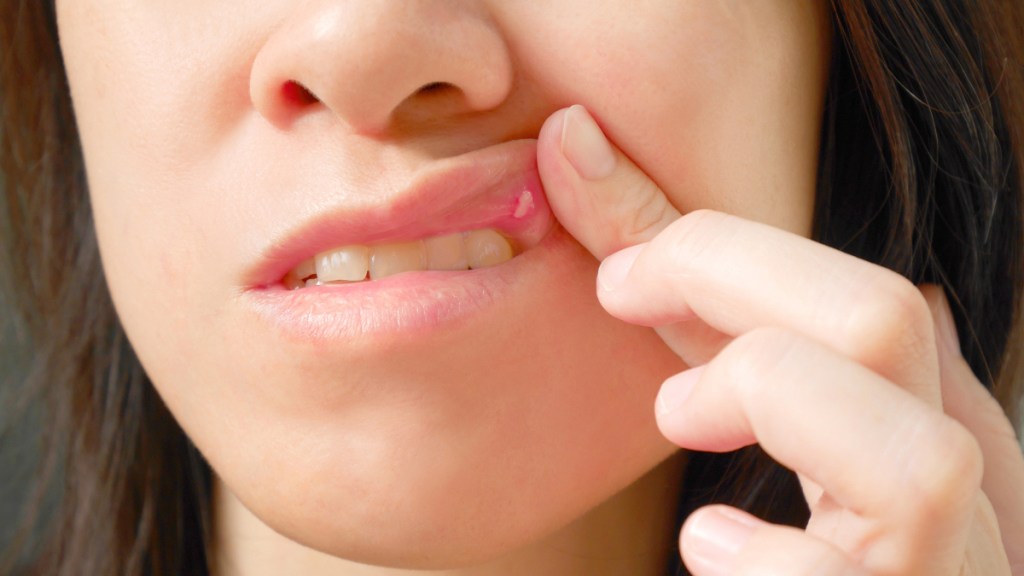
How to treat white gums caused by canker sores
Most canker sores heal on their own within a week or two. But if you want to relieve pain and speed up your recovery, try a saltwater rinse. Dissolve 1 tsp. of salt into 1/2 cup of warm water. Swish the solution around in your mouth for 15-30 seconds, then spit it. Repeat every few hours, as needed.
Note: If you frequently get canker sores, it might be due to a vitamin B12 deficiency. In this case, your doctor or dentist might recommend vitamin B-12 supplementation. A study in the Journal of the American Board of Family Medicine found that people who took 1,000 mcg of vitamin B12 daily had fewer canker sores overall, fewer canker sore outbreaks and less pain.
4. Oral lichen planus
Oral lichen planus is an inflammatory autoimmune disease that affects the mucous membranes in the mouth. The mucous membranes help keep your tongue, lips and gums moist. They also serve as a barrier to harmful microorganisms.
Anyone can experience oral lichen planus, but it’s twice as common in women as in men. Symptoms include white patches and/or threadlike lesions on the gums and inner cheeks, bright red gum tissue and raised white or yellow patches on the gums, tongue and cheeks. Because oral lichen planus has similar symptoms as leukoplakia (more on that below) it’s crucial to see an oral health expert.
How to treat white gums caused by oral lichen planus
Oral lichen planus typically occurs because of an autoimmune disease like hepatitis B or primary biliary cirrhosis. It can also be triggered by medications such as beta-blockers and non-steroidal anti-inflammatory drugs (NSAIDs). Stopping these medications (with your doctor’s approval) often prevents oral lichen planus from worsening. But if your symptoms continue, your doctor might recommend medication such as corticosteroids.
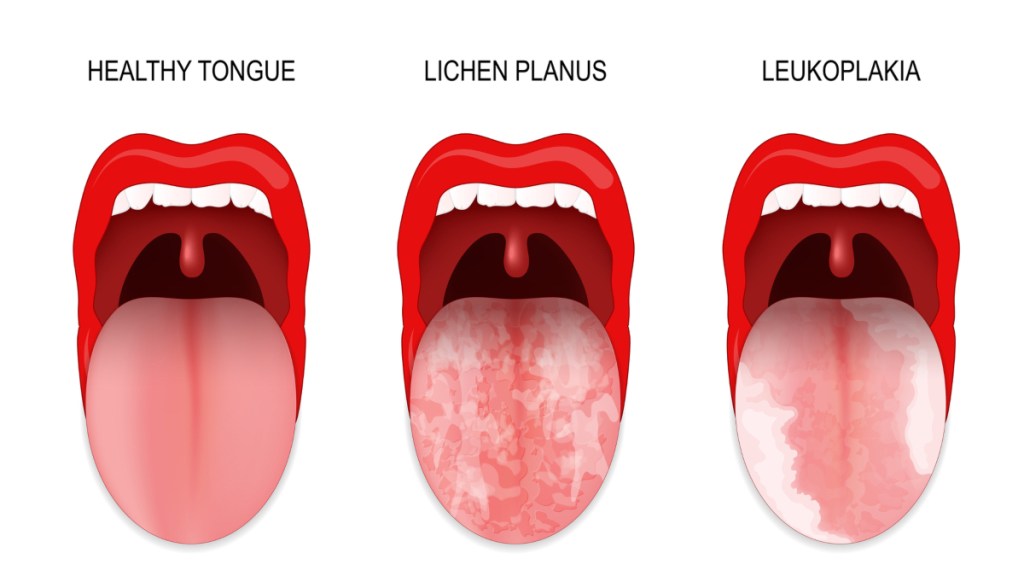
5. Oral leukoplakia
Oral leukoplakia is a rare, but potentially serious, cause of white gums. “Also known as smoker’s keratosis, leukoplakia is white patches inside the mouth,” explains Jarrett Manning, DDS, “America’s Favorite Dentist” and the owner of JLM Dental Studio in Atlanta, Georgia. “It’s not always cancerous, but it can potentially become cancerous over time with the use of tobacco products.”
Dr. Santana says these patches can form in different areas, including the gums, inside of the cheeks and on the floor of the mouth. Dentists aren’t yet sure why oral leukoplakia affects some people and not others, but it’s prevalent in those who smoke and use chewing tobacco. (Click through to see the best foods for healthy gums.)
How to treat white gums caused by oral leukoplakia
Since oral leukoplakia increases your risk of oral cancer, undergoing routine dental exams is vital. Luckily, most leukoplakia growths are small and improve with lifestyle changes. “Stopping tobacco and alcohol consumption are important steps in preventing and managing the condition,” Dr. Santana says. However, if your growths don’t improve or get bigger, you might need oral surgery to remove them. And since oral leukoplakia tends to come back, most people need regular checkups to monitor it.
6. Teeth whiteners
Professional and at-home teeth whitening treatments eliminate stains and tooth discoloration. They can safely brighten your smile, but only “when performed with the correct techniques and materials,” Dr. Santana says. Without the right approach, “hydrogen peroxide, one of the main ingredients in teeth whitening products, can irritate the gums similar to a chemical burn.” In some cases, this causes the gums to turn white and become sore.

How to treat white gums caused by teeth whiteners
The oral health experts we spoke to said the best way to avoid this type of white gums is to have your teeth whitened by a professional. Although at-home teeth whitening treatments can be effective, for some, they’re tricky to apply. Cosmetic dentists have the training and expertise to prevent white gums and other possible complications. (Tip: If you’re not yet ready to give up at-home whitening, click through to see the best ways to whiten sensitive teeth while cutting back on irritation.)
7. Oral cancer
Most causes of white gums are easily treatable and nothing to stress over. Still, oral cancer is can be an uncommon cause of white gums. It can occur anywhere inside the mouth, including the tongue, gums and inner cheeks. The symptoms vary, but a common indication is gum discoloration. More specifically, white or grey patches on the gums and/or throat (leukoplakia).
Oral cancer is relatively rare, affecting about 11 in 100,000 people. And it’s possible to reduce your risk. Consider that 75% of people who develop oral cancer use tobacco products or drink lots of alcohol. Eating a well-balanced diet, regularly visiting the dentist and avoiding tobacco and alcohol can significantly reduce your risk.
When to seek treatment for white gums
Gum discoloration is something that most people experience at one time or another. It typically isn’t something to be concerned about, but you shouldn’t ignore it either.

“White gums are nothing to panic over, but they’re important to pay attention to,” Dr. Brown says. “I understand that going to the dentist can be scary, expensive or inconvenient. But it’s important you get checked out if you have white gums that persist beyond even a week. In some instances, white gums can be an indication of oral cancer or leukoplakia [precancerous changes in the mouth], which we want to catch as early as possible.”
That means visiting the dentist every 3 to 6 months for oral exams and professional teeth cleanings. “Your oral health is a great indicator of your body’s overall health,” adds Dr. Manning. “Take any unusual gum conditions or pains seriously and consult your dentist.”
For more ways to safeguard your gums and keep your smile healthy:
Dentists Reveal How to Get Rid of Canker Sores Fast + What Remedies Actually Make Them Worse
Dentists Reveal 7 Foods for Healthy Gums, Including a Sweet Treat You’d Never Expect
Top Dentists: Oil Pulling Won’t Whiten Your Teeth, But Here’s Why You’ll Want to Try It Anyway
This content is not a substitute for professional medical advice or diagnosis. Always consult your physician before pursuing any treatment plan.
















